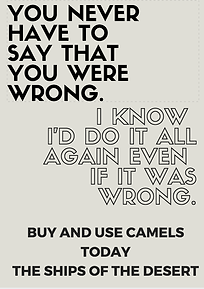




The “Ships of the Desert”, the Latest Innovation in Transportation Systems
Nayeli Vivas TSTR

On November 2, 2015 I went back in time with my travel machine to the year 755 CE. I found myself in the middle of the desert, so I began walking. I walked for miles and miles, until I reached a small town that was located in the middle of the desert, called Sijilmasa.
I would have never imagined that in here I would found the most amazing and spectacular way of transportation, the camel.
I had recently discovered a sand route known as the Trans-Saharan Trade that connected different parts of Africa. Through my past journeys, I had learned about so many cultures, religious practices and ways of living, but I had never seen people using camels to ship goods.
My one-week stay at Sijilmasa was very productive and meaningful. As soon as I got to Sijilmasa, I saw a small structure in which people were commercializing their camels for trading purposes. This caught my attention so I rapidly directed myself there. I approached one of the camel dealers so he could that he could explain what was going on. “We have been using camels to transport our goods since the Arabs brought them about five years ago,” he said, “and the best part of it is that the usage of camels led to the creation of new specialized occupations, so I have been benefited by this innovation.”
Indeed, using camels was very advantageous for many people in countless of regions. These regions included people from every social class and everyone was benefited by this momentous innovation. Camels were able to carry pounds of gold, bricks of salt and other heavy loads across the Sahara Desert. They have such huge feet, capable of sliding them in the sand and walk for long distances. Camels could easily adapt to the environment by drinking large amounts of water and storing it in their blood. Also, these groundbreaking animals have a third eyelid that act as swimming goggles to protect their eyes from the sand. They live for about 40 years and if they are well treated, they are patient beasts.
The camel dealer told me that the Trans-Saharan Trade officially commenced after the introduction to the camel. The usage of camels opened the trade between towns and cities in both West and East Africa. He gave me a clear picture of what type of goods the merchants traded. He described these products as, “they carried many wonderful products, including spices from India and iron tools and weapons from Kush.” He also described to me about the great amount of slaves that are traded everyday.
If the camel dealer and his co-workers across the Sahara Desert didn’t domesticate the camel, the long expeditions through the Sahara would have never been possible during this time period. It was dazing to see the way camels were being employed in here, a way in which they were never used before. This sand road helped developed an interregional trade route linking North Africa and the Mediterranean with the people of West Africa. As a result of this technological innovation, big political structures were established and religious ideologies such as Islam were spread, bringing the world together, in a way it had never been seen before.




